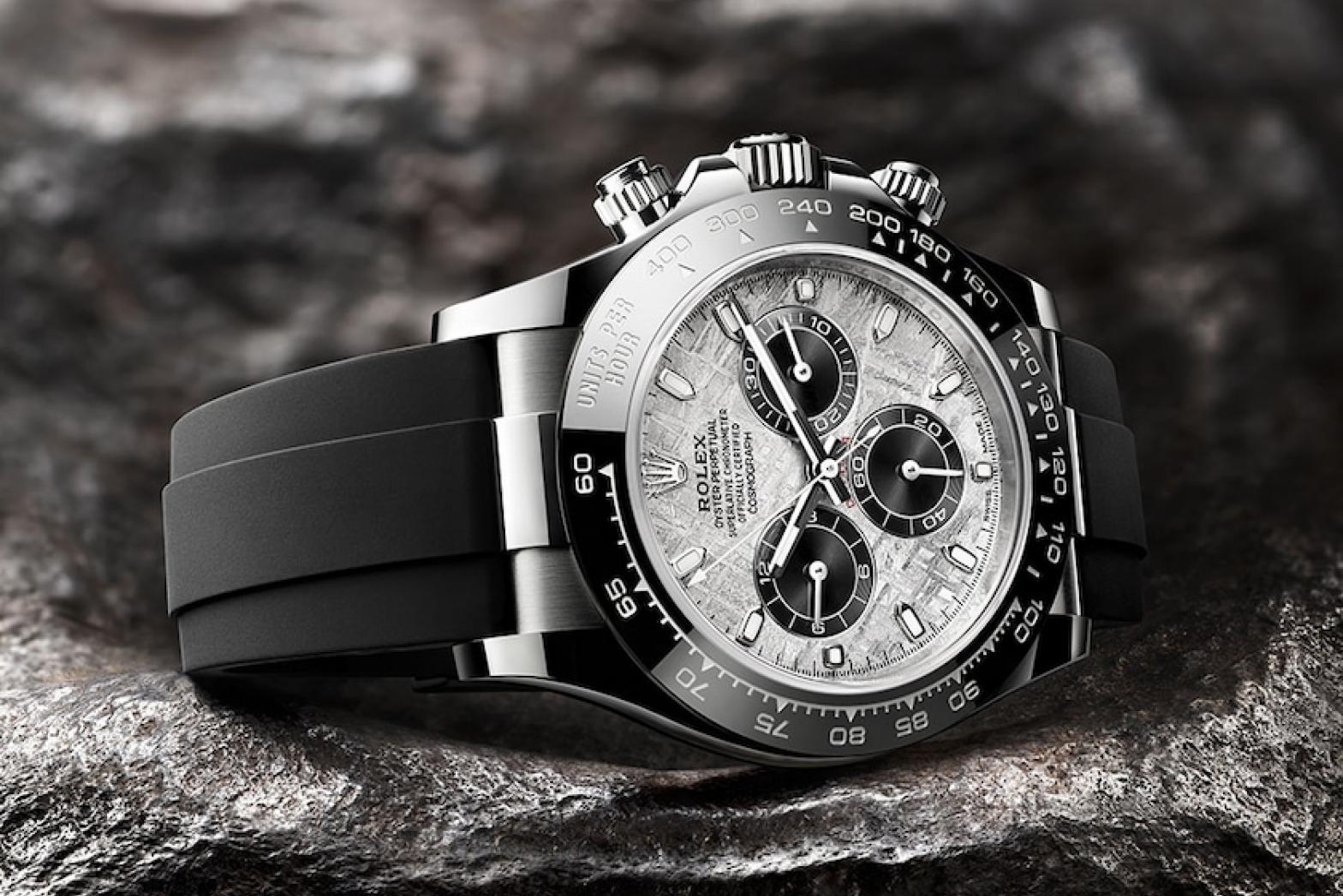
We take a road-trip through time to chart the surprising rise of one of the most desirable chronographs, the Cosmograph Daytona — from the 60s stopwatch to an international status symbol
Even by the standards of a brand as famously inscrutable as Rolex, the Daytona is an especially intriguing product. Prior to the outbreak of WWII the company had already been making chronograph wristwatches, but it wasn’t until the 1950s that the full vision for a motorsport-inspired flagship began to percolate. Even then, public reaction was muted. In 1963, the earliest examples could be had for around US$200 — just shy of two grand in today’s economy. As GQ Feature Writer Cam Wolf tells it, much of the Daytona’s later success can be attributed to “the laws of supply and demand”. “Because of early lack of interest...there aren’t as many to go around now,” says Wolf. “So, naturally, people want what they can’t have.”
Today, in both vintage and modern circles, the Daytona is demonstrably a watch that people want: whether because of record-breaking prices at auction; multi-year waitlists; or the elusive legitimacy conferred upon it by Hollywood elites. Understandably, that’s a lot to sift through — not all of which will be immediately useful for someone looking to buy their first example — so in this episode of ICON, I’ve broken the discussion into four areas. We’ll cover the Daytona’s early years amid the Golden Age of motorsport; the arrival (and subsequent popularity) of the ‘Paul Newman’ models; how Rolex bridged the gap between the Daytona’s vintage and modern persona; and, finally, where the collection sits today.

Golden Years: The Daytona in the 60s
Consider for a moment the broader historical setting in which the Daytona was birthed. In 1957, Omega had already released the Speedmaster — nearly a decade before it would go on to attain the mantle of “first watch on the moon” — with Rolex determined to close this gap by strengthening its own presence in the international motorsports community. In 1962, there was an opportunity to do just that.
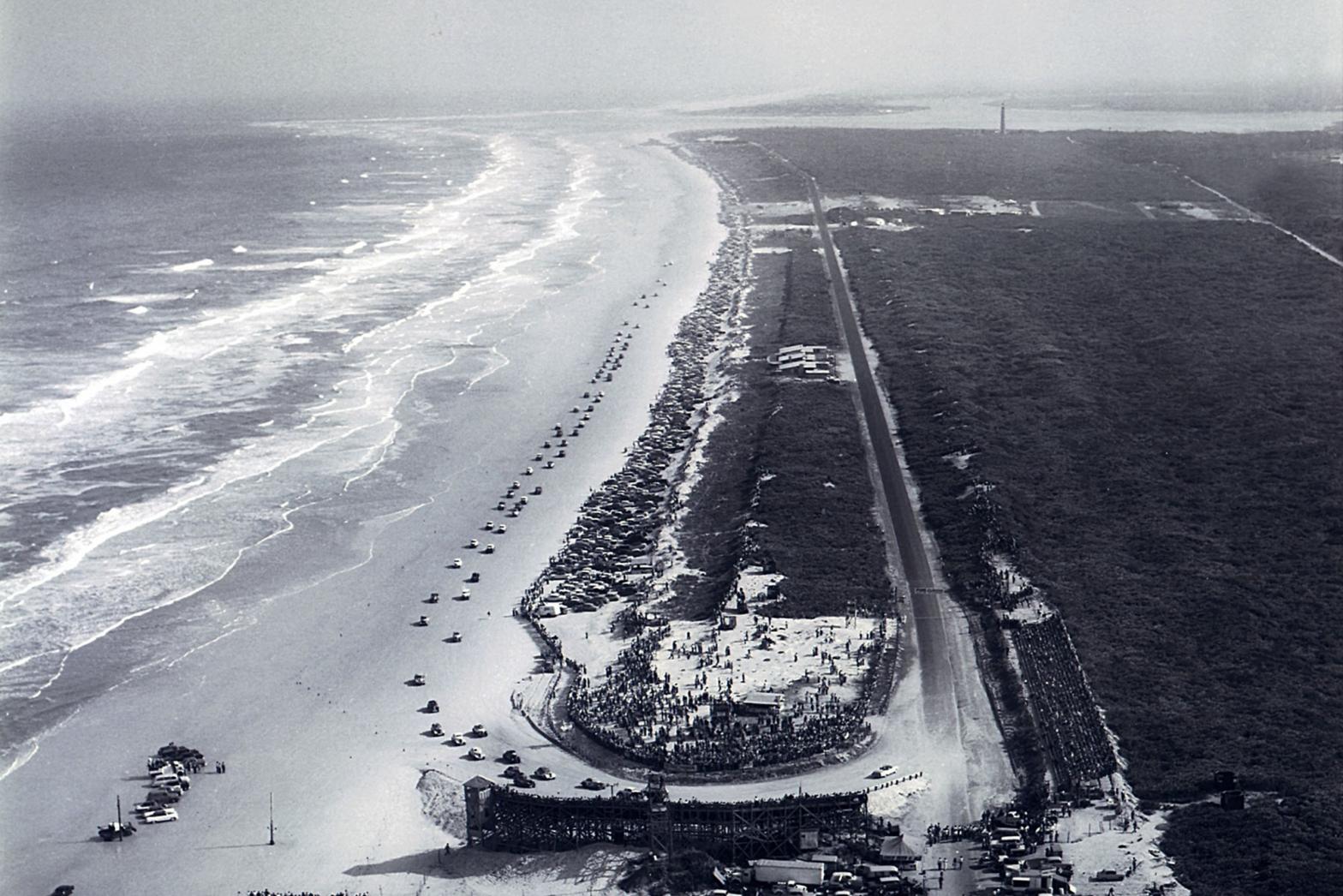

Ref. 6239 — A Chronograph Designed, Built For And Inspired By The Daytona Speedway
To commemorate its appointment as official timekeeper of the Daytona International Speedway (now home to what many regard as the most important race in NASCAR) Rolex unveiled the Ref. 6239. Fittingly, this first Daytona established a number of norms that we still associate with the eponymous collection today. These include the signature ‘panda’ dial (a combination of black registers on a white dial, or vice-versa); an engraved tachymetric bezel; circular ‘pump’ pushers; and the red “DAYTONA” arcing above 6 o’clock.
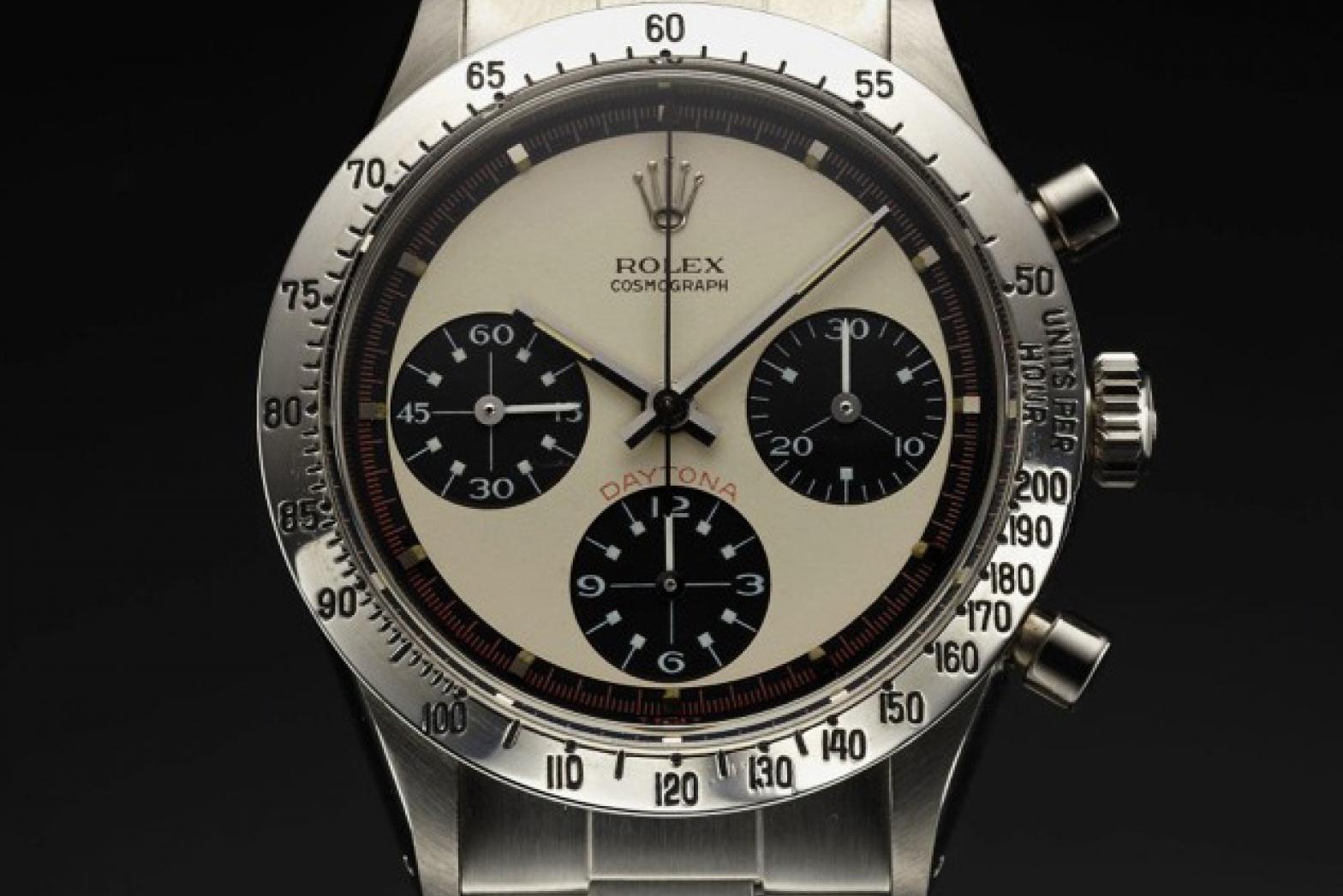
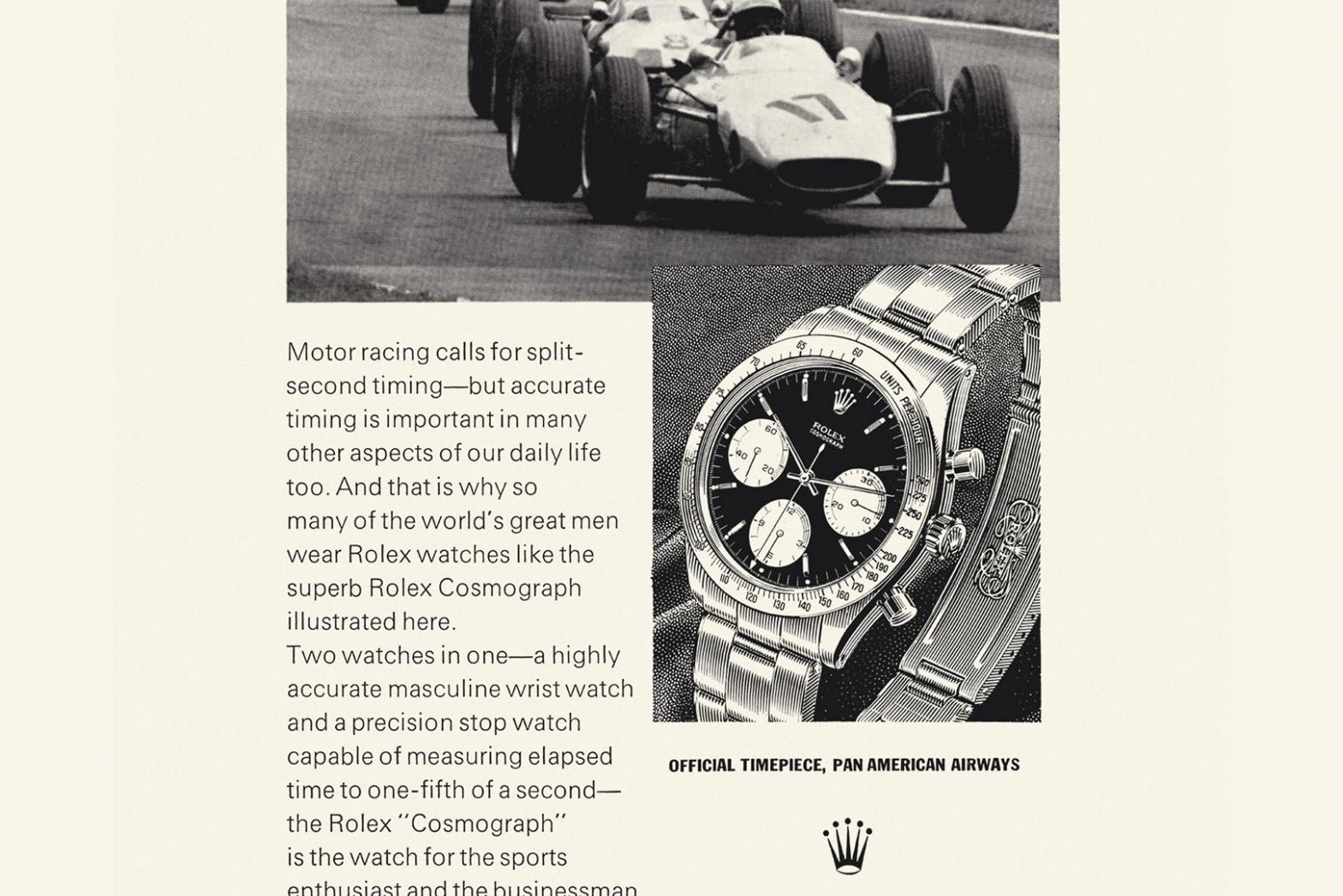
Ref. 6240 — The Daytona Gets Its Now-Iconic Screw-Down Pusher
Though the 6239 is frequently thought of as the archetypal Daytona — a reputation that is buoyed by that reference’s relatively lengthy production period — Rolex continued to push the design language in subsequent iterations. In 1965, the Ref. 6240’s launch was accompanied by the introduction of yet another signature feature — the ‘screw-down’ pusher. Deceptively simple, the pushers would ‘lock’ when fully screwed into position, improving the Daytona’s overall water resistance and suitability to clients beyond the speedway.
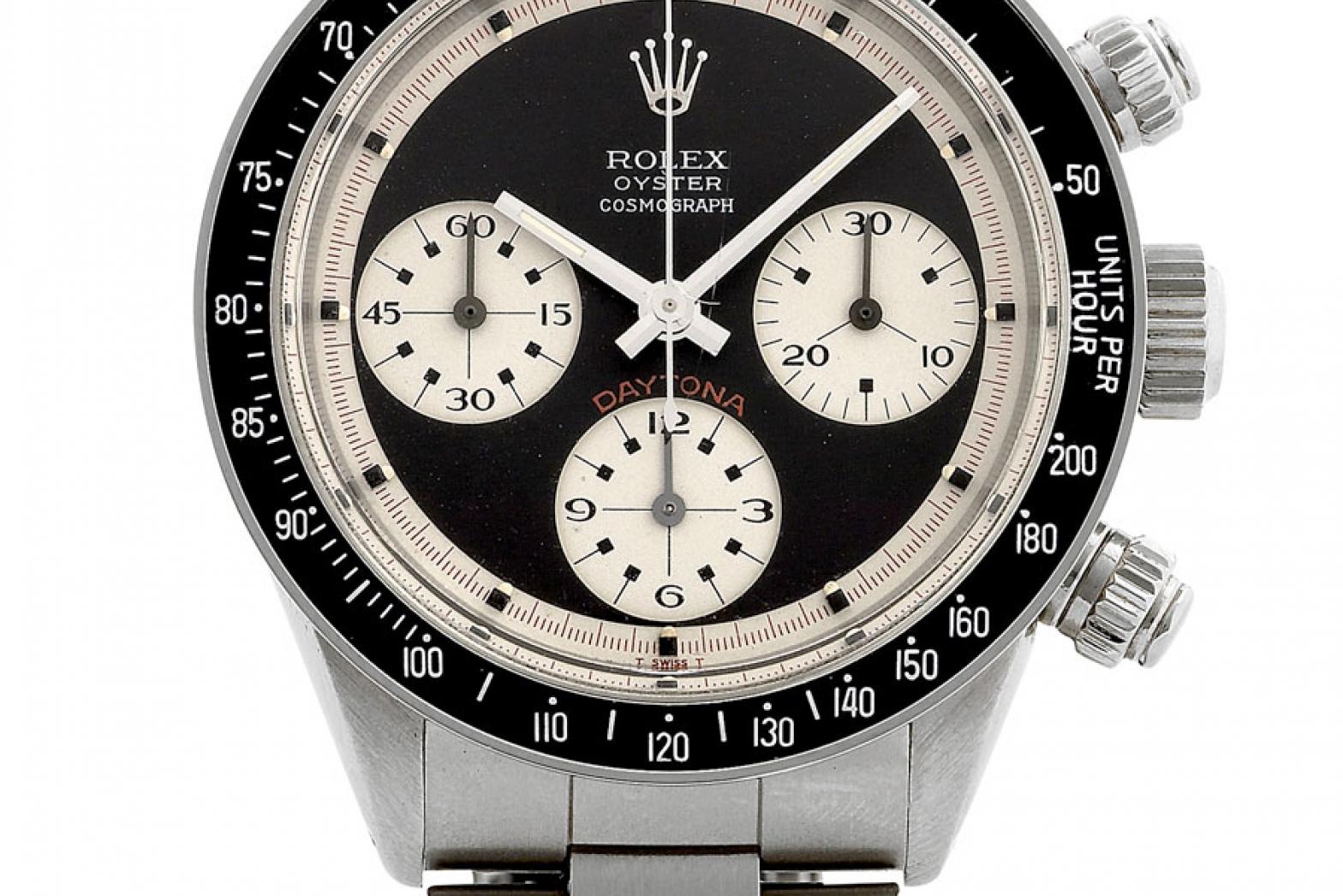
In the two decades that followed, the Daytona would go on to receive a host of small and incremental updates — a total of seven references, most of which overlapped with one another, were manufactured encompassing everything from acrylic bezels to models cased in 14-karat/18-karat gold and of course, the so-called ‘Paul Newman’ dials.
The Paul Newman References: 1965-1988
Of course, one could argue there’s already an excess of reading material about the ‘Paul Newman’ Daytona — yet no serious discussion could occur without a hat-tip, at least, to this vaunted subset of the Cosmograph.

Singer dials: The Paul Newman’s Not-So-Secret Weapon
First introduced in 1965 and subsequently made famous by Paul Newman (during the actor’s professional racing career) these timepieces are functionally identical to their regular-production brethren save for one crucial difference — the dials. Made at Rolex’s behest by Singer, ‘Paul Newman’ dials are most easily spotted by looking at the chronograph registers: usually sporting thin line indices tipped with squares (called ‘hash’ indices) and numerals printed in a curving, sinuous Art-Deco font. Of the original Daytona references, Rolex made 6 as Paul Newmans — albeit in quantities roughly 20 times smaller than your standard iteration. Hence, the issue of supply and demand.
The Soaring Desirability of ‘Paul Newman’ Daytonas At Auctions
It’s clear that the Paul Newman connection is the phenomenon most responsible for driving the Daytona’s sustained rise in desirability — and not just with motorsports fans. Decades of impassioned advocacy by Japanese and Italian dealers, coupled with the watch’s status as a trophy at Le Mans and the 24 Hours of Daytona — both races Newman himself competed in — covered it with the halo of glory; and by the time the 1990s rolled around, public consensus about what was once considered an obscure, brutish stopwatch had all but shifted.
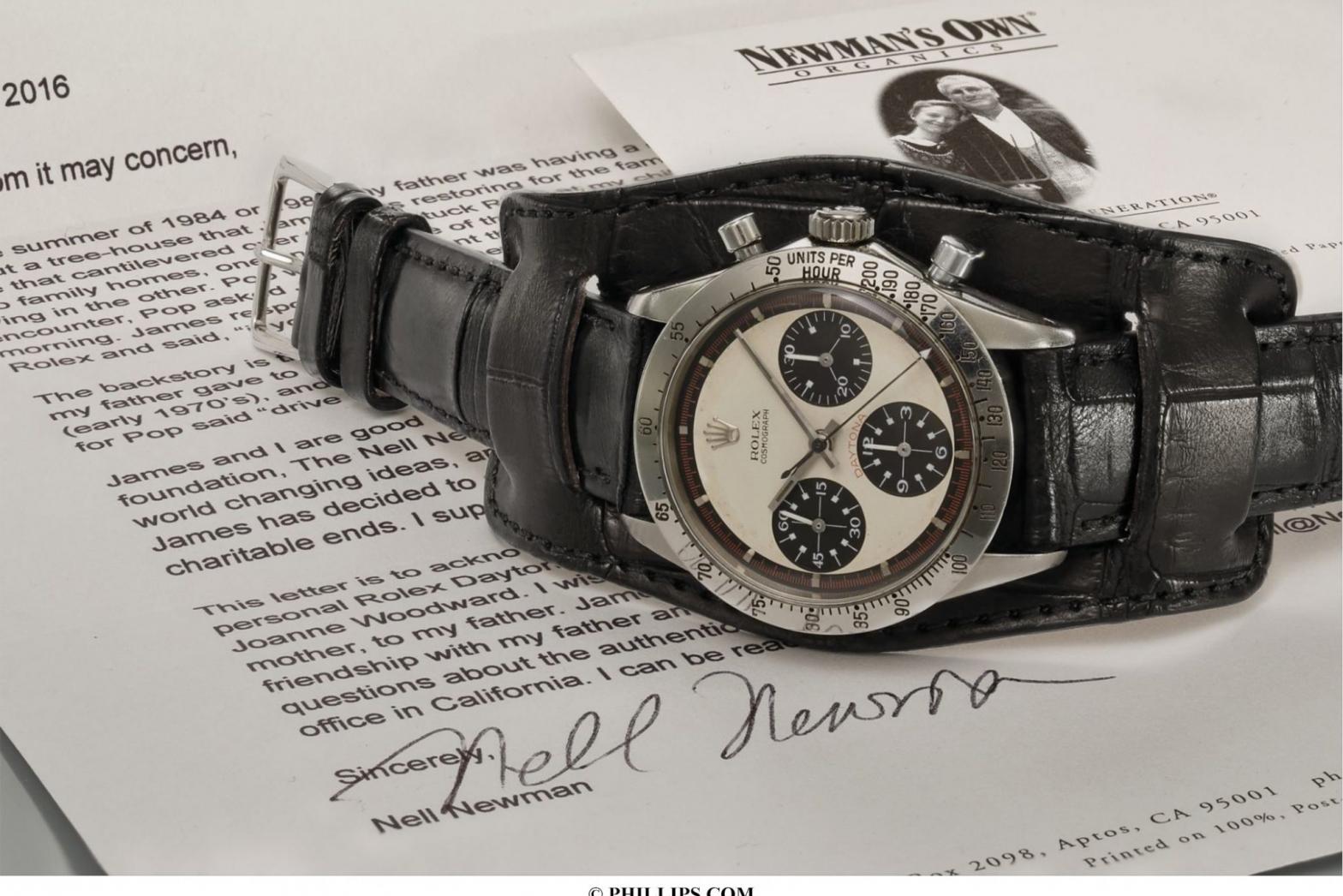
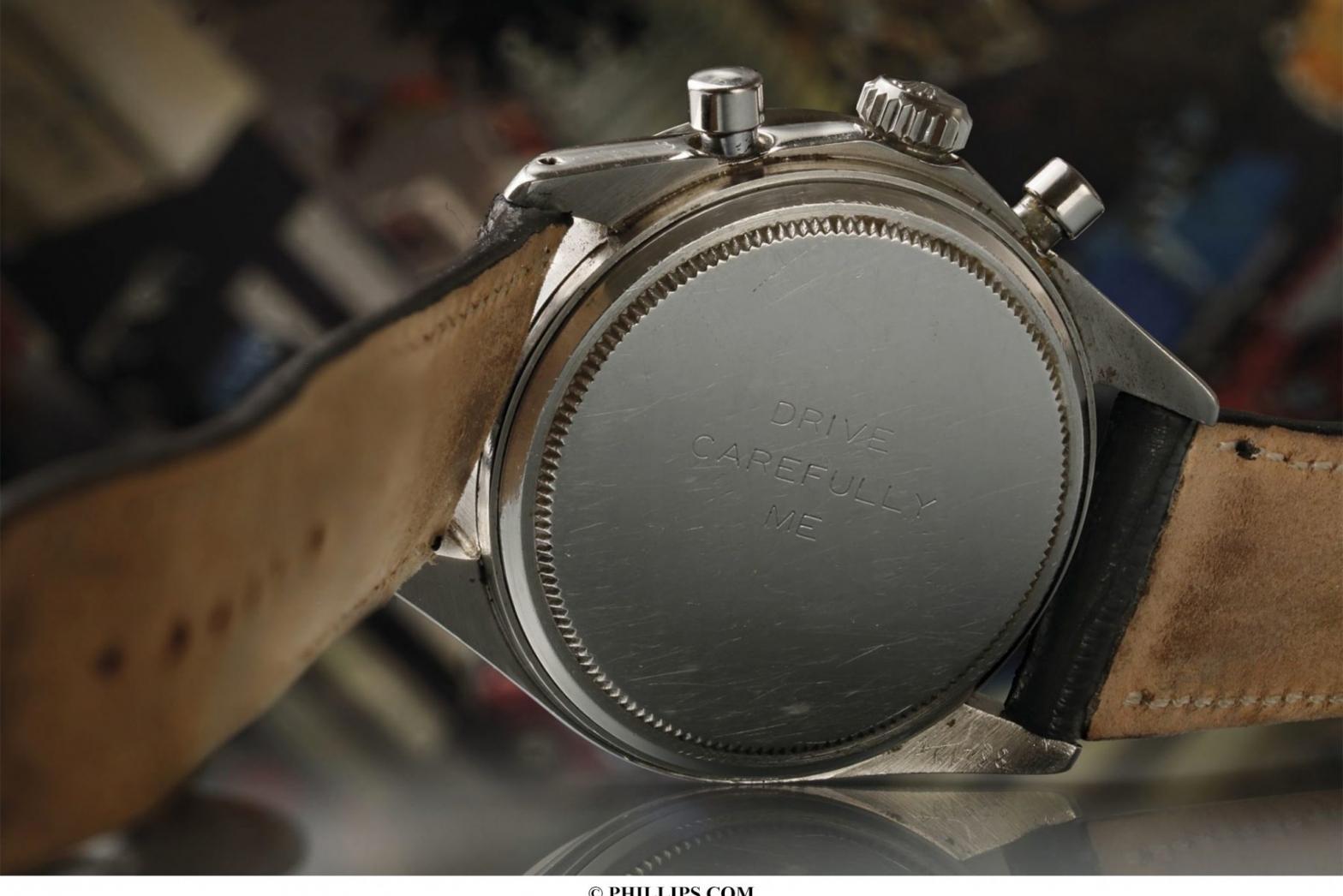
Over the next 20 years prices at auction compounded, culminating in the sale of Newman’s personal 6239 for US$17.75 million. To date, that’s still the most expensive Rolex ever to be publicly sold — by a country mile. Other honourable mentions in this regard include a 6240 nicknamed ‘The Neanderthal’ (sold for US$3.01 million in 2018) and the historically important ‘John Player Special’; the latter of which managed to net US$1.54 million in an online-only sale, despite the predations of the COVID-19 crisis.
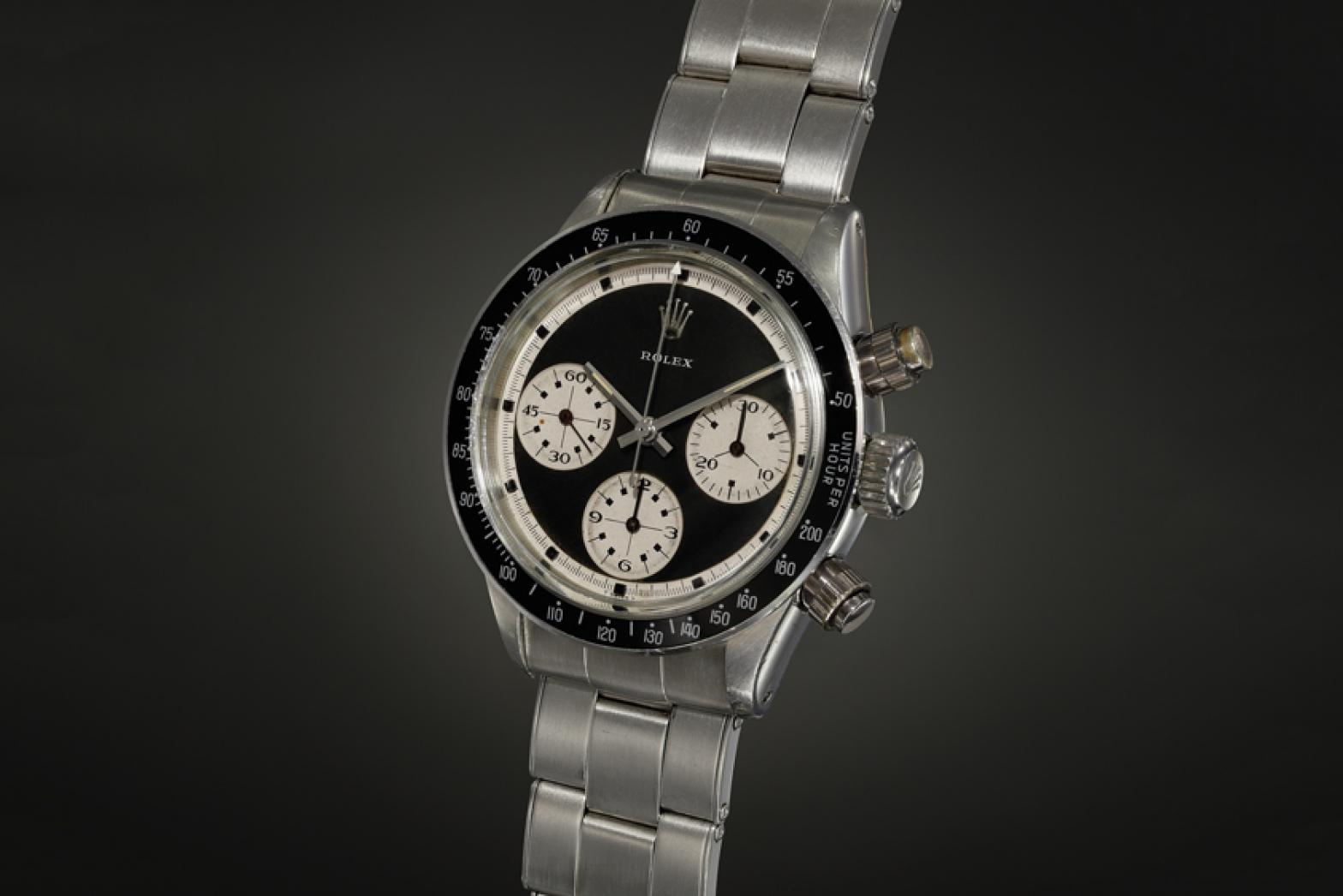
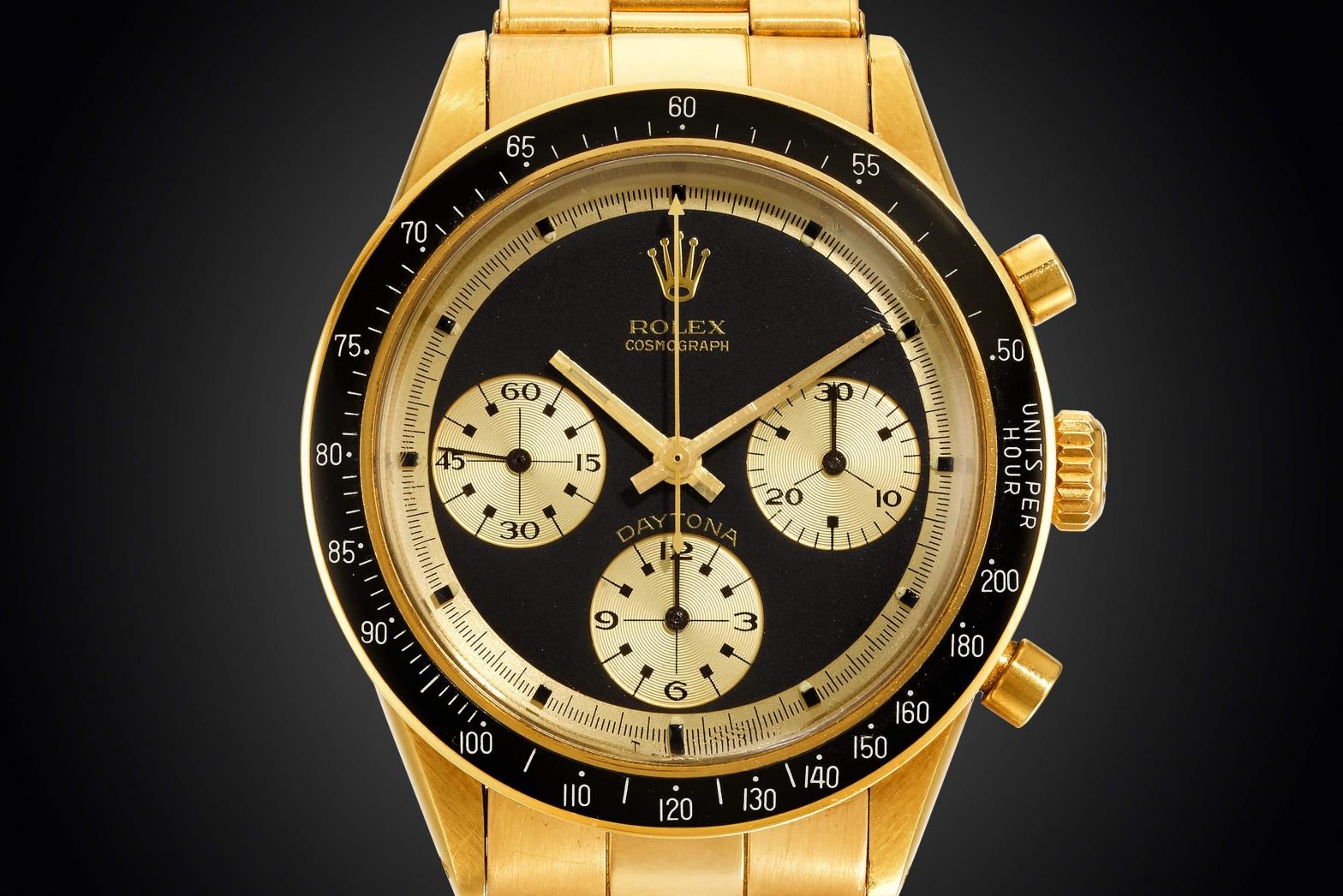
The ‘Zenith’ Daytona: Bridging The Gap Between Modern And Vintage

The First Self-Winding Daytona, Featuring A Modern Movement
To cope with an increased demand for the original Daytonas (read: the 4-digit references) Rolex began production of a second series in 1988. Equipped with an automatic movement for the first time, the Ref. 16520 is nowadays known simply as the ‘Zenith’. This particular series — halfway between the realm of modern and bona fide vintage — is named after the eponymous Swiss watchmaker whom Rolex sourced the El Primero 400 movement from. A fully integrated chronograph engineered to operate at 36,000vph (“vibrations per hour”), it was already a technical marvel during the Quartz Crisis — even before Rolex’s watchmakers set about modifying it to their famously unbending internal standards.


Subsequently, the Zenith movement was designated Calibre 4030. To better meet the needs of commercial customers, Rolex reduced the rate of oscillation to 28,800vph -- minimising component wear and tear — while swapping out half the original parts, in order to achieve ‘superlative chronometer’ certification. Those technical experiments laid the groundwork for the calibre 4130: the first genuinely ‘in-house’ chronograph by Rolex, and the bedrock of the current Daytona lineup.
The Most Desirable 5-digit Daytonas
When it was discontinued at the dawn of the new millennium, the 16520 had already been produced with a dizzying array of dials and bezels. Despite the reference’s age and ubiquity — especially when compared to the earlier Paul Newman Daytonas — it boasts its own share of ‘grail’ configurations, a few of which I’ll rattle off now. These include, in no particular order: those 16520s possessing R or early L-series case numbers, confirming the presence of authentic ‘floating porcelain’ dials; those made between 1993-1998 in which the rings surrounding the chronograph registers have oxidised to a tropical sheen; and fleeting examples from early in production that were ‘double signed’ with the Tiffany & Co signature.
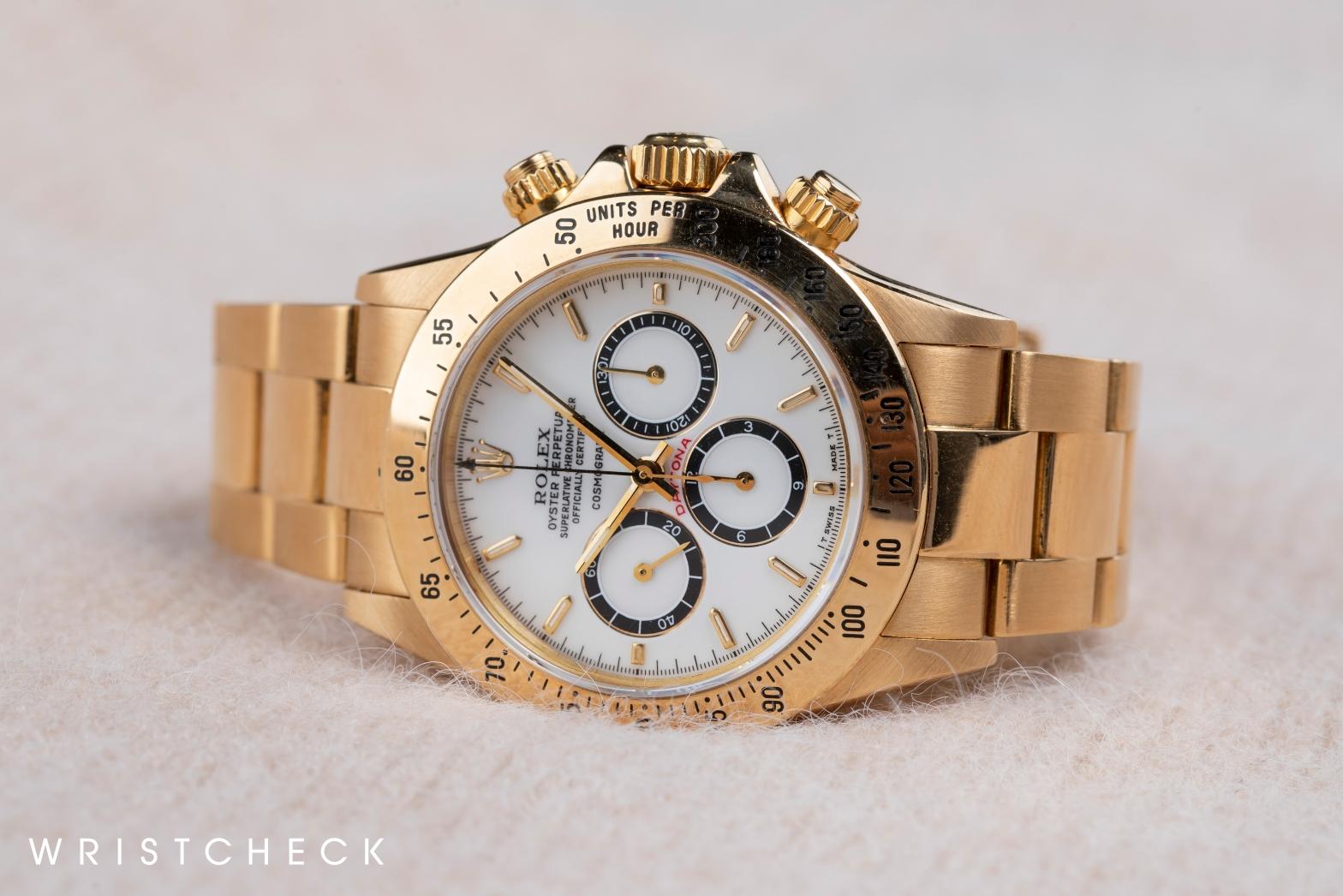
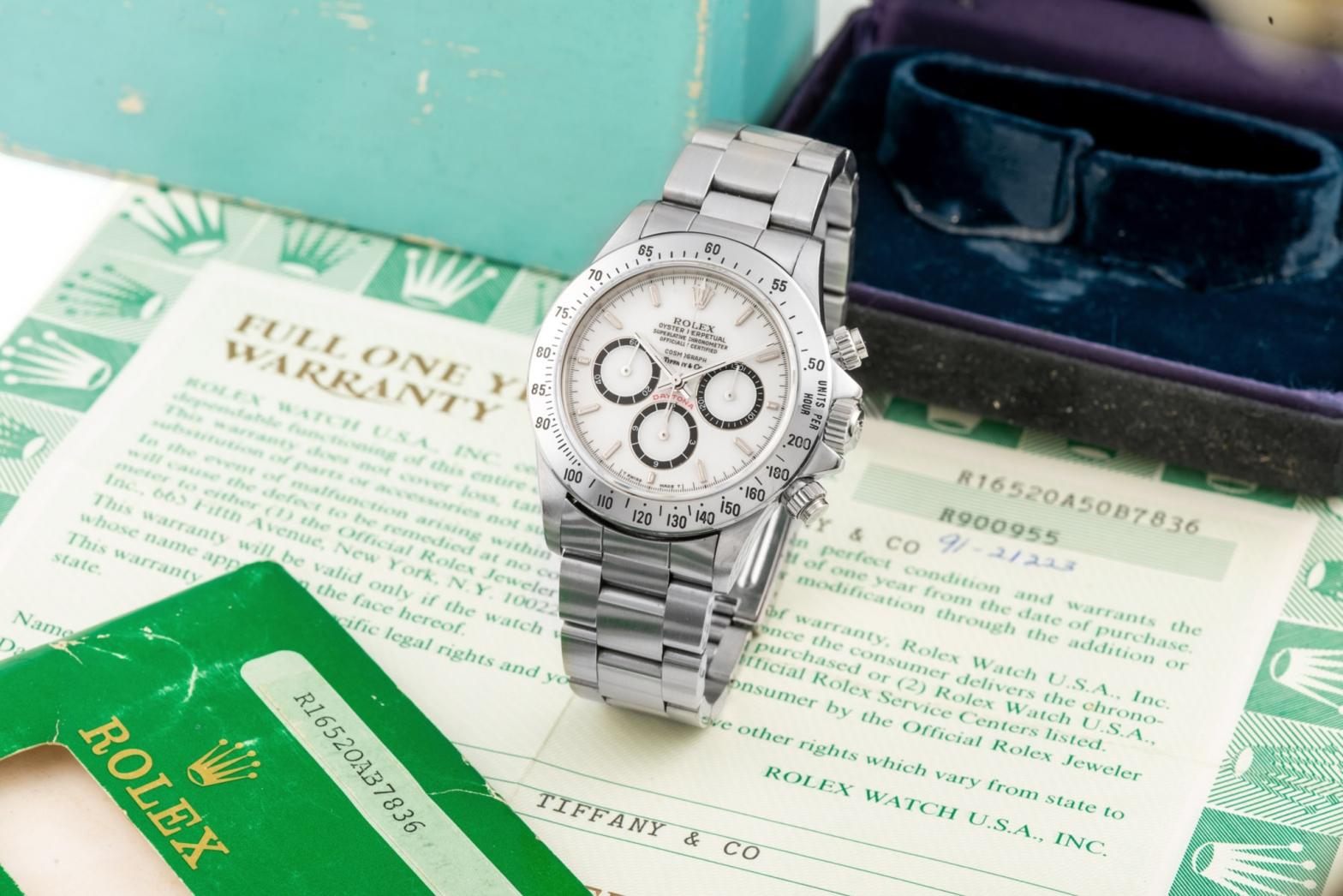
Modern Love: The Current Daytona Lineup
Widely characterised as the third series of Daytona, it’s extremely helpful to look at the current lineup of 6-digit references through the prism of comparison (as opposed to listing every new model off of a spec sheet). There’s a glimmer of likeness between this series and the Daytona of decades past, but a few significant updates illustrate how the design has undergone a near total shift into the world of luxury — a far cry from how it was perceived half a century ago.
These changes tend to be focused around technology, with Rolex injecting small doses of modern material into the lineup at regularly scheduled intervals. In 2008, the company released its first Daytona in the proprietary 18k gold alloy known as Everose. That configuration would once again capture collectors’ attention in 2011: when it became the first Daytona to receive the now-standard-issue Cerachrom bezel (a feature more closely associated with the current Ref. 116500 in stainless steel) making it all but impervious to scratches and ultraviolet light. But in typical fashion, the Coronet appears to have saved its best for last -- releasing the inaugural batch of Daytonas on Oysterflex ‘bracelets’ in 2017. That combination isn’t something you’re apt to find in the world of vintage. Not if you’re concerned about authenticity, at any rate.
